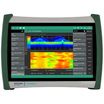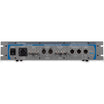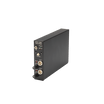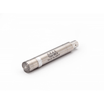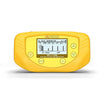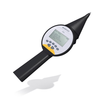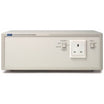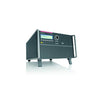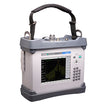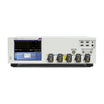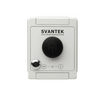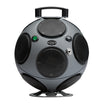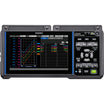

Pendul FTR-210R GNSS Disciplineret frekvens og tidsreference
Brug vores chat til personlig support. Eller kontakt os via +45 31 33 18 19 eller Salg@GOmeasure.dk
- GNSS disciplineret rubidium atomur
- Primær standard sporbarhedsmulighed via indbygget kalibrator og generering af kalibreringsrapporter
- Valgfri frekvensmålingsindgang til 400 MHz med ultrahøj opløsning (op til 12-13 cifre/s)
- Op til 9x10 MHz output
- 1x5 MHz og 5x10 MHz ultrastable frekvensreferenceudgange som standard som standard
- Valgfrie udgange inkluderer: 4x10 MHz, 4x1 pps eller 0,1, 1, 5, 10 MHz
- Valgfri programmerbar pulsudgang 0,5 Hz til 100 MHz
- Webserverfunktionalitet. Kontrol, overvåg og download data overalt i verden via ETH.
- Let at bruge
Oplev mulighederne
Mere information
Beskrivelse
De FTR-210R GNSS Disciplineret frekvens og tidsreference er en Standard for flere udgangsfrekvenser, med næsten cæsiumniveau-stabilitet, takket være GNSS-kontrollen. Der er 7 standardudgange (5x10 MHz, 1x5 MHz og 1x1 pps), der kan udvides med op til 4 ekstra output, plus en programmerbar 100 MHz pulsudgangsmulighed.
Den valgfri integrerede uafhængige frekvenskalibrator garanterer sandt Sporbarhed til GPS-Time Scale og NIST. Sporbare kalibreringsrapporter genereres let.
En valgfri Input til frekvensmålinger til 400 MHz omdanner FTR-210R til en en-boks ultra-høj ydeevnefrekvenskalibrator med op til 13 cifreopløsning på et sekund.
Frekvens og/eller tidsstandard
Når den bruges som GNSS -disciplineret frekvensstandard, er den kortvarige stabilitet meget høj, og aldring er næsten nul.
Når den bruges som en selvstændig frekvensstandard, i manuel hold-over-tilstand, er stabiliteten ultrahøj. Aldring er mindre end 5х10-11/måned.
Når den bruges som GNSS -disciplineret tidsstandard, adskiller 1 pps -tidsreferenceputputen mindre end 10ns RMS fra UTC. Når GNSS-disciplinering fjernes, er hold-over-drift meget lav; Typisk 1 μs/24 timer.
Modulær, multi-output-konfiguration
Den grundlæggende konfiguration indeholder 5x10 MHz, 1x5 MHz og 1x1 pps -udgange til understøttelse af andre instrumenter, testere eller testobjekter. Hvis det ikke er tilstrækkeligt, kan 4 yderligere output monteres på bagpanelet. Disse output er enten
- 4x10 MHz
- 4x1 pps
- 0,1, 1, 5 og 10 MHz
Derudover kan du aktivere en valgfri programmerbar pulsudgang, 0,5 Hz til 100 MHz, via en SW -licens, når som helst.
Målinginput til en-boks frekvenskalibrering
Den ultra-stabil frekvensreference kombineret med den valgfri DC til 400 MHz måleindgang konverterer FTR-210R-frekvensreferencen til en komplet frekvenskalibrator med én boks.
Målingsfunktioner inkluderer frekvens, periode, pulsbredde, stigning/faldtid, dræbehastighed og spænding (VMIN, VMAX, VP-P).
Tie (tidsintervalfejl) er en valgfri funktion (SW aktiveret).
Udførelsen af måleindgangen er avanceret. Du har 14 ps tidsopløsning (7 ps valgfrit) og 12-13 cifre med frekvensopløsning i 1 s porttid. Målinger er gap-fri, hvilket betyder, at alle individuelle cyklusser tælles uden noget hul.
Du kan følge kortvarig og langsigtet stabilitet på den enhed, der testes på 5 ”farvedisplayet, både numerisk og grafisk. Målehastigheden kan indstilles fra 1 MSA/s (20 MSA/s valgfri) op til en prøve hver 1000 sek.
Du kan gemme op til 32M måleprøver i hver session og gemme op til 1G-målinger i en ikke-flygtig hukommelse.
FTR-210R kan producere sporbare kalibreringsprotokoller i CSV-format for både den interne tidsbasehenvisning (valgfrit) og enheden, der blev testet, når som helst.
Dokumenter
Datablad:
Muligheder
Video
De FTR-210R GNSS Disciplineret frekvens og tidsreference er en Standard for flere udgangsfrekvenser, med næsten cæsiumniveau-stabilitet, takket være GNSS-kontrollen. Der er 7 standardudgange (5x10 MHz, 1x5 MHz og 1x1 pps), der kan udvides med op til 4 ekstra output, plus en programmerbar 100 MHz pulsudgangsmulighed.
Den valgfri integrerede uafhængige frekvenskalibrator garanterer sandt Sporbarhed til GPS-Time Scale og NIST. Sporbare kalibreringsrapporter genereres let.
En valgfri Input til frekvensmålinger til 400 MHz omdanner FTR-210R til en en-boks ultra-høj ydeevnefrekvenskalibrator med op til 13 cifreopløsning på et sekund.
Frekvens og/eller tidsstandard
Når den bruges som GNSS -disciplineret frekvensstandard, er den kortvarige stabilitet meget høj, og aldring er næsten nul.
Når den bruges som en selvstændig frekvensstandard, i manuel hold-over-tilstand, er stabiliteten ultrahøj. Aldring er mindre end 5х10-11/måned.
Når den bruges som GNSS -disciplineret tidsstandard, adskiller 1 pps -tidsreferenceputputen mindre end 10ns RMS fra UTC. Når GNSS-disciplinering fjernes, er hold-over-drift meget lav; Typisk 1 μs/24 timer.
Modulær, multi-output-konfiguration
Den grundlæggende konfiguration indeholder 5x10 MHz, 1x5 MHz og 1x1 pps -udgange til understøttelse af andre instrumenter, testere eller testobjekter. Hvis det ikke er tilstrækkeligt, kan 4 yderligere output monteres på bagpanelet. Disse output er enten
- 4x10 MHz
- 4x1 pps
- 0,1, 1, 5 og 10 MHz
Derudover kan du aktivere en valgfri programmerbar pulsudgang, 0,5 Hz til 100 MHz, via en SW -licens, når som helst.
Målinginput til en-boks frekvenskalibrering
Den ultra-stabil frekvensreference kombineret med den valgfri DC til 400 MHz måleindgang konverterer FTR-210R-frekvensreferencen til en komplet frekvenskalibrator med én boks.
Målingsfunktioner inkluderer frekvens, periode, pulsbredde, stigning/faldtid, dræbehastighed og spænding (VMIN, VMAX, VP-P).
Tie (tidsintervalfejl) er en valgfri funktion (SW aktiveret).
Udførelsen af måleindgangen er avanceret. Du har 14 ps tidsopløsning (7 ps valgfrit) og 12-13 cifre med frekvensopløsning i 1 s porttid. Målinger er gap-fri, hvilket betyder, at alle individuelle cyklusser tælles uden noget hul.
Du kan følge kortvarig og langsigtet stabilitet på den enhed, der testes på 5 ”farvedisplayet, både numerisk og grafisk. Målehastigheden kan indstilles fra 1 MSA/s (20 MSA/s valgfri) op til en prøve hver 1000 sek.
Du kan gemme op til 32M måleprøver i hver session og gemme op til 1G-målinger i en ikke-flygtig hukommelse.
FTR-210R kan producere sporbare kalibreringsprotokoller i CSV-format for både den interne tidsbasehenvisning (valgfrit) og enheden, der blev testet, når som helst.

